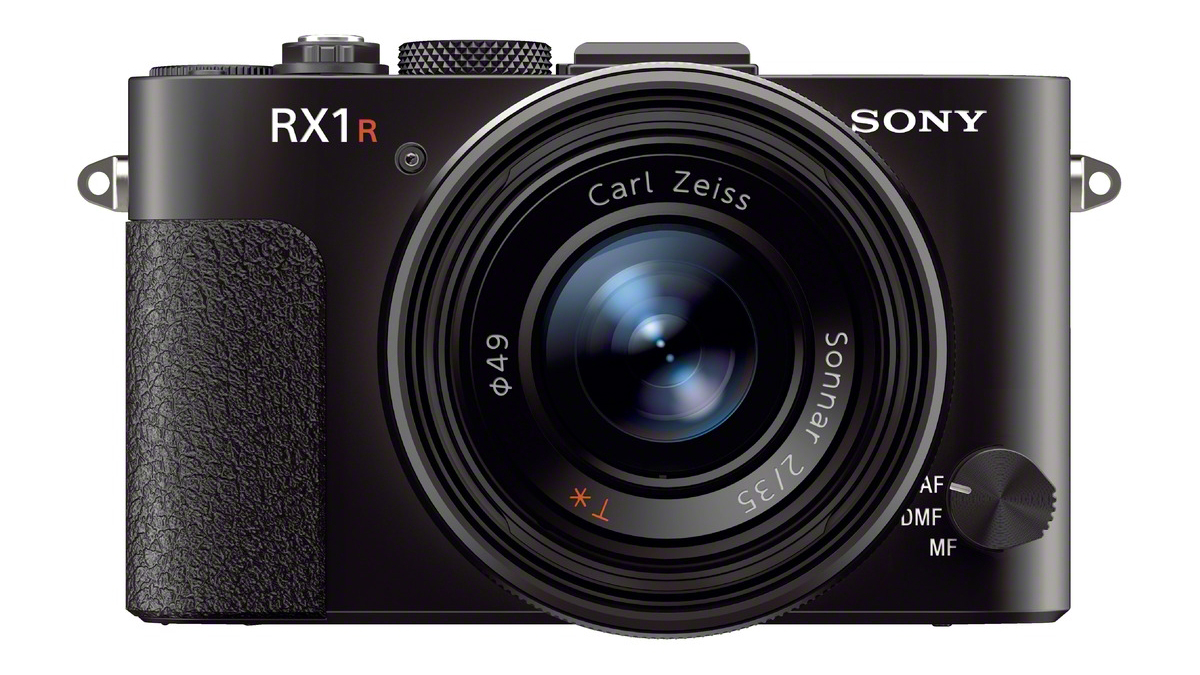Why you can trust TechRadar
We shoot a specially designed chart in carefully controlled conditions and the resulting images are analysed using DXO Analyzer software to generate the data to produce the graphs below.
A high signal to noise ratio (SNR) indicates a cleaner and better quality image.
For more more details on how to interpret our test data, check out our full explanation of our noise and dynamic range tests.
Here we compare the Sony RX1-R with the Canon 5D Mk III, Sony RX1, Nikon D800 and Sony Alpha a99.
JPEG signal to noise ratio
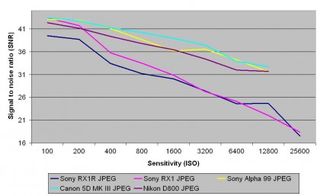
As we can see from this chart, the Sony RX1-R's JPEG files have a weaker signal to noise ratio than those from the Canon 5D Mk III, Nikon D800 and Sony Alpha a99 at every sensitivity setting. The new Sony RX1-R's JPEGs have weaker ratios than the original Sony RX1's JPEGs at ISO 100-1600, score about the same at ISO 3200, 6400 and 25600, and are stronger at ISO 12800.
Raw signal to noise ratio
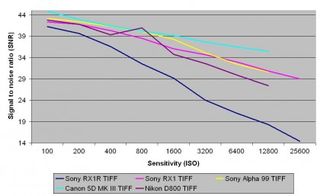
TIFF images (after conversion from raw) from the Sony RX1-R contain weaker signal to noise ratios than TIFFs from the Canon 5D Mk III, Sony RX1, Nikon D800 and Sony Alpha a99 at every sensitivity setting.
JPEG dynamic range
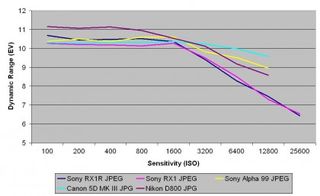
The Sony RX1-R's JPEGs show stronger dynamic range than JPEGs from the Canon 5D Mk III and Sony RX1 at ISO 100-1600, though at ISO 3200 and above the Canon takes the lead. The RX1-R and RX1 produce very similar levels of dynamic range at ISO 3200 and above, with the original coming out slightly ahead at ISO 3200, 6400 and 25600. The Nikon D800's JPEGs have stronger dynamic range than the RX1-R's JPEGS at every sensitivity setting, and the Sony Alpha a99's JPEGs are stronger at every sensitivity but ISO 100 and 400.
Raw dynamic range
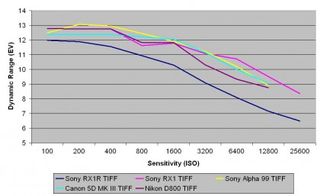
This chart indicates that TIFF images (after conversion from raw) from the Sony RX1-R contain weaker dynamic range than those from the Canon 5D Mk III, Sony RX1, Nikon D800 and Sony Alpha a99 at every sensitivity setting.
Current page: Noise and dynamic range
Prev Page Image quality and resolution Next Page Sample imagesAmy has been writing about cameras, photography and associated tech since 2009. Amy was once part of the photography testing team for Future Publishing working across TechRadar, Digital Camera, PhotoPlus, N Photo and Photography Week. For her photography, she has won awards and has been exhibited. She often partakes in unusual projects - including one intense year where she used a different camera every single day. Amy is currently the Features Editor at Amateur Photographer magazine, and in her increasingly little spare time works across a number of high-profile publications including Wired, Stuff, Digital Camera World, Expert Reviews, and just a little off-tangent, PetsRadar.

Tiny feet, bionic arms, and bots that can deliver a sandwich – 6 weird and wonderful robot vacuum innovations from CES 2025

Adobe will kill its popular 20GB Photoshop & Lightroom plans very soon, so make sure you make the right move

No, this is not a new Trashcan Mac Pro: Mac Mini-inspired desktop hybrid NAS sees daylight
